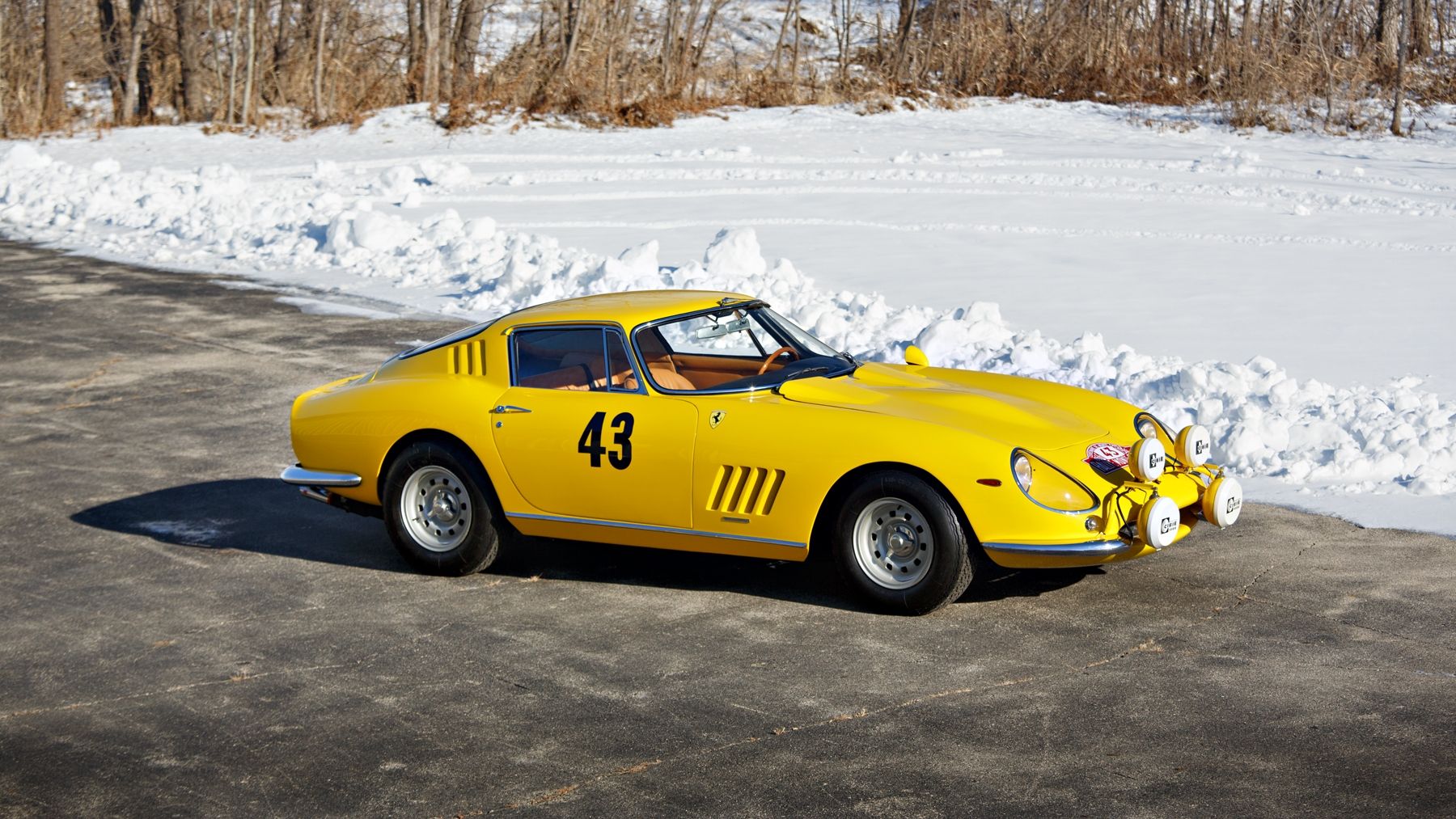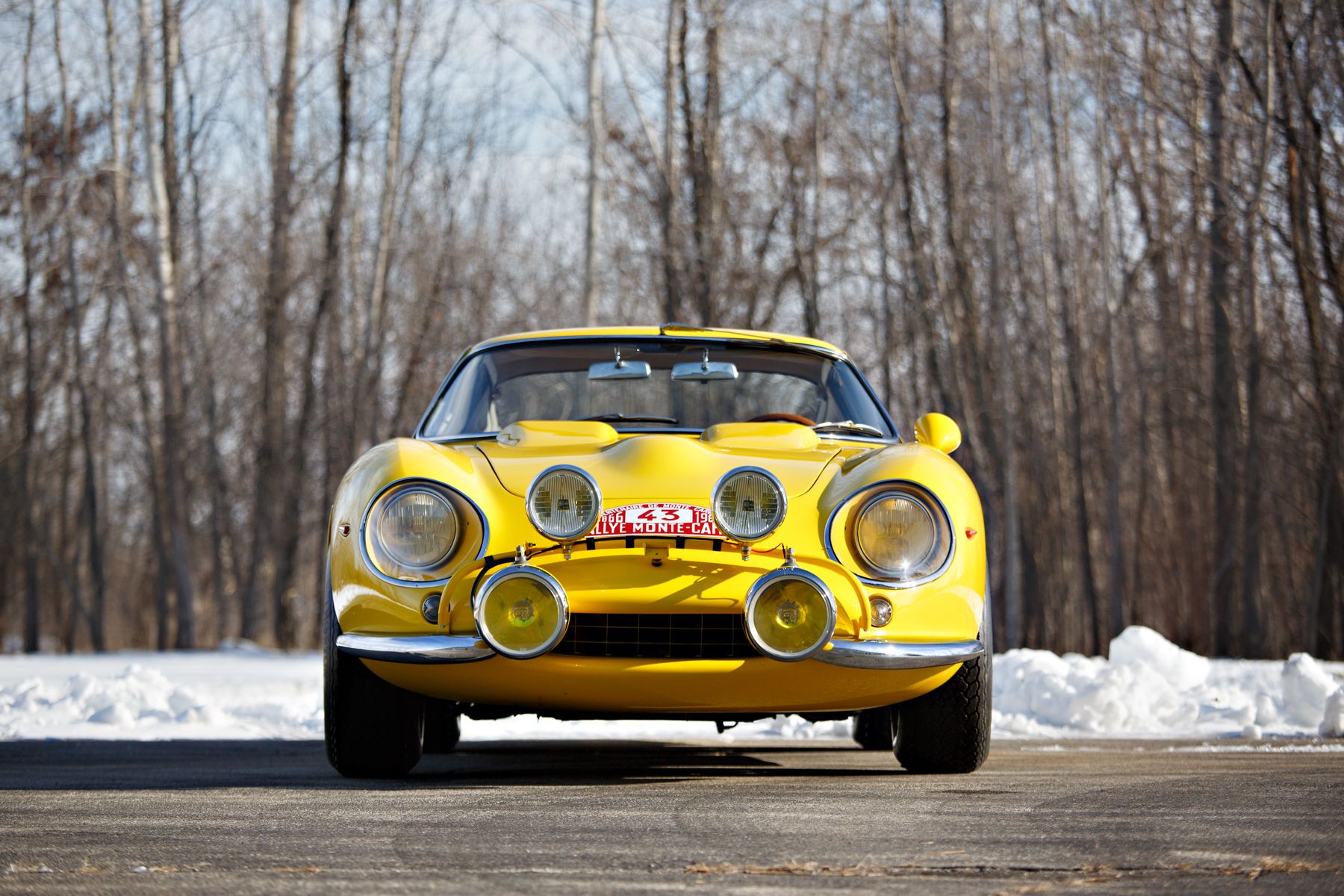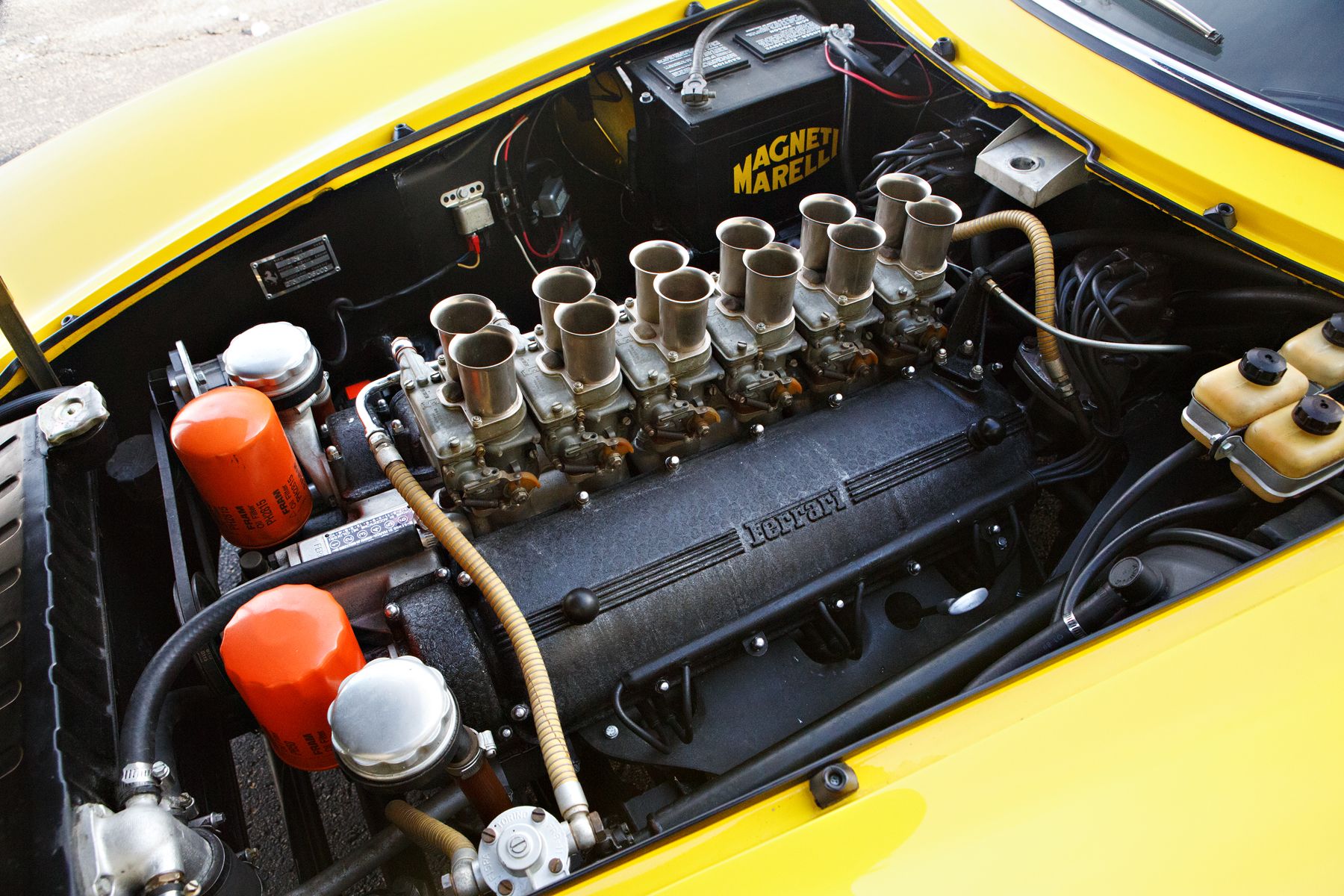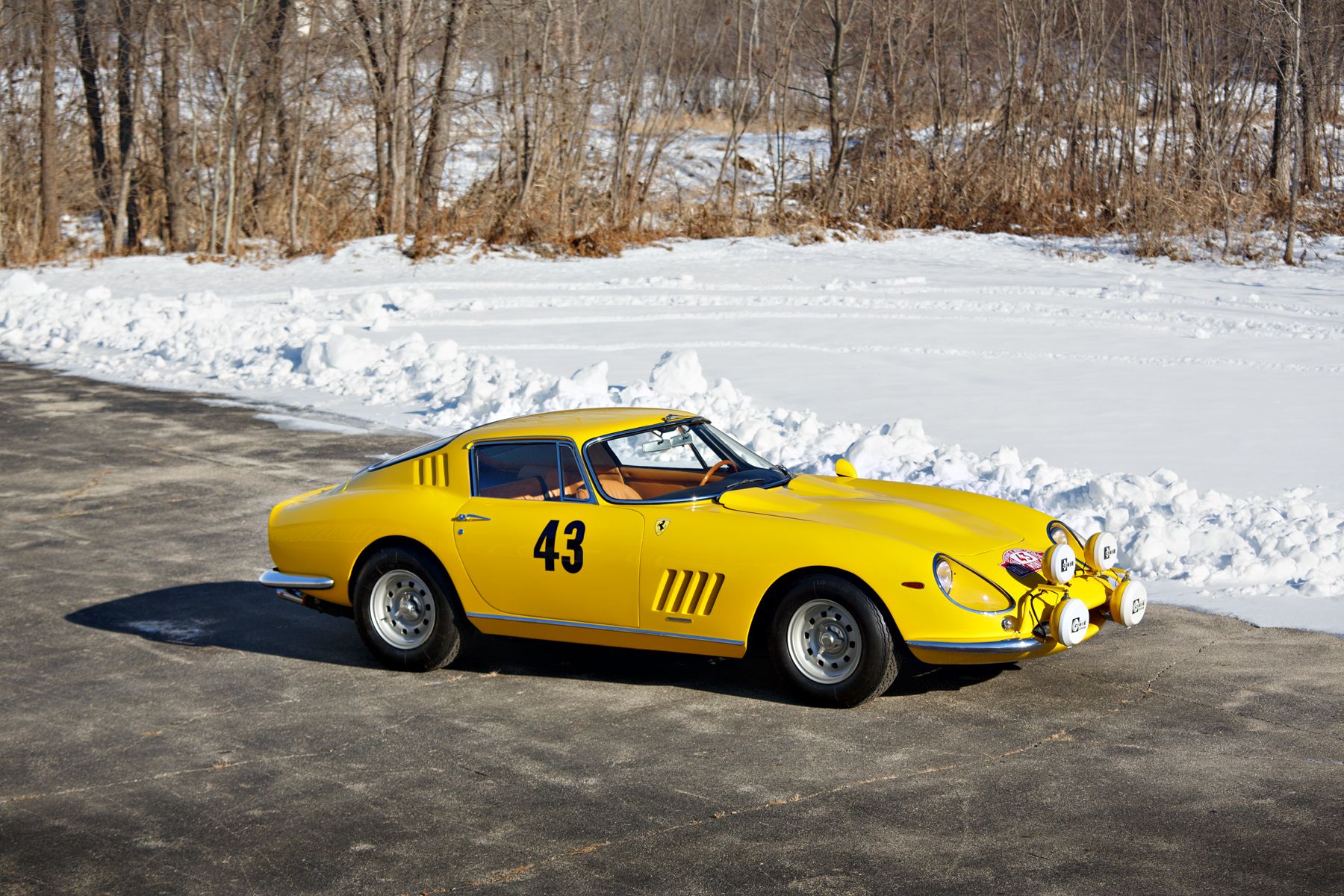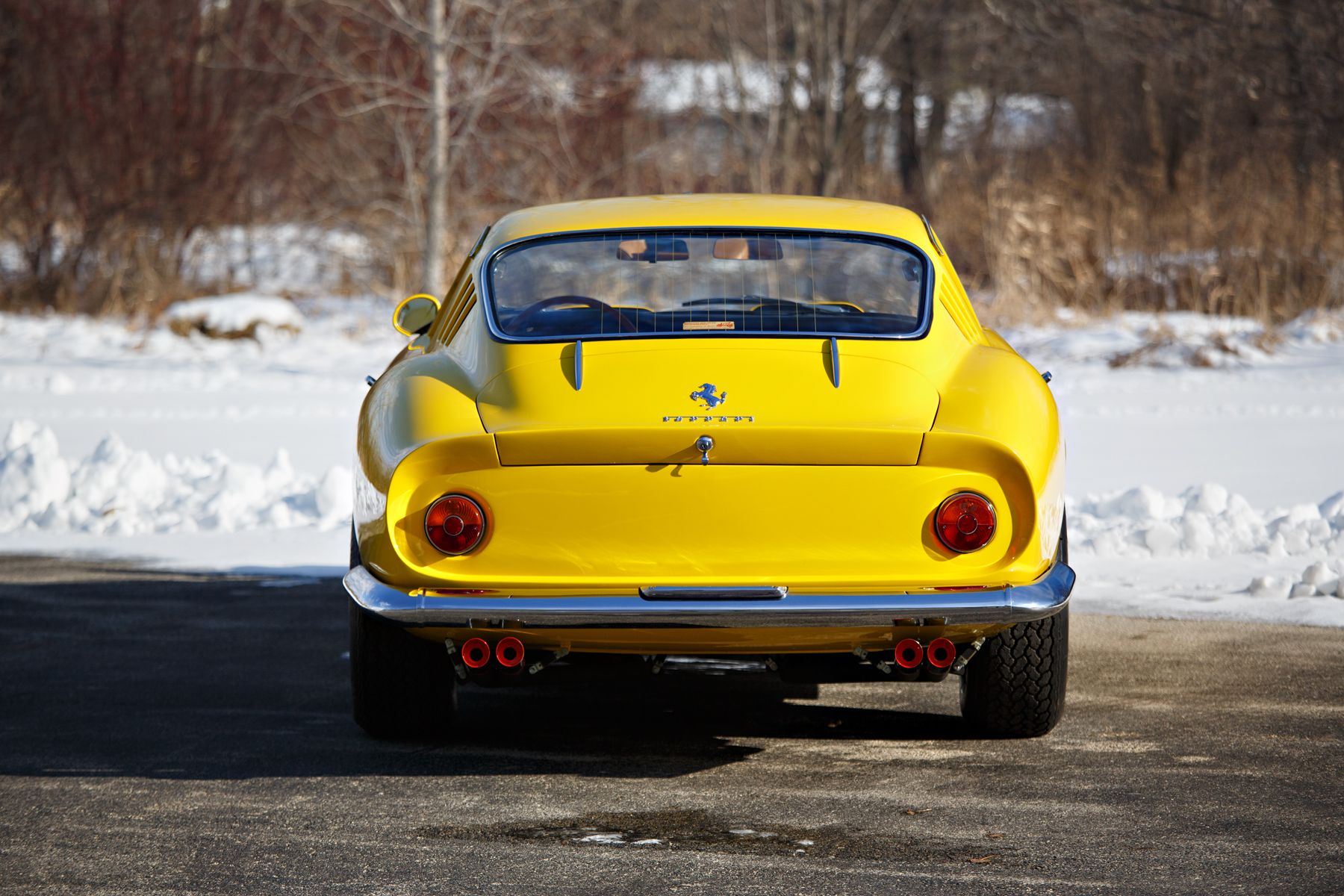Over 50 years ago, Giorgio Pianta took on the grueling Monte-Carlo Rally not in a Mini, nor in a Citroen, not even in a Ford, but in a gorgeous, yellow Ferrari 275 GTB, with Maranello's blessing. The car, looking the same as it did back in 1966 heads to the Gooding & Company's Scottsdale auction that's taking place between January 18th and 19th.
The 275 GTB was introduced in 1964 as a replacement to the aging 250 series. It was the first Ferrari to have a transaxle although the engine was still the venerable Colombo-designed 60-degree V-12. This particular example is one that has been used extensively for both show and go: it was showcased at motor shows, it was used as a mobile testbed, and it raced. Now, restored from end to end, it should fetch in excess of $8 million at auction, a price that's not unheard of for a 275 GTB, especially since this one has a unique backstory and we all know that, many a time, the backstory is what sells a classic car.
A Ferrari That Went Rallying and Got Beaten by a Citroen
By 1964, Ferrari was presenting its updated 250 GTO/64, the updated version of the famous 1962 model that took the World Manufacturer's title two years on the trot. The name of the new car, 275 GTB, derived from the capacity of each cylinder of 275 cubic centimeters or 0.27-liters. As such, the gorgeous front-mounted V-12 amassed a total capacity of 3.3-liters and was said to produce around 280 horsepower, although a more realistic number was in the 240-250 horsepower ballpark. It also came with independent double-wishbone suspension although the chassis was of the classic ladder type. Most of the cars had steel bodywork with only the doors, hood, and trunk being made out of aluminum.
This is the first 275 GTB built, chassis #6003, and, due to that fact, it features a SOHC Tipo 213 V-12, unlike the usual production models that came first with a twin-cam setup and then with a four-cam. However, with six twin-choke Weber 40 DCN carburetors in place, it puts out 266 horsepower at 6,500 rpm which reach the rear wheels through that rear-mounted 5-speed transaxle with a Porsche-style synchromesh design. It was first built at Scaglietti with the short-nose front end that also made its way into production, some 250 275 GTBs receiving it. Later on, it returned to the body shop and was updated to long-nose specification for Ferrari to test the aerodynamic efficiency of the longer front overhang.
Ferrari Experimental Department carried out most of the testing of the car and, what is more, its chassis and engine numbers are listed on the FIA’s homologation papers for the 275 GTB/C where C obviously stands for 'Competizione.' The car, originally painted in 'Prototype Yellow" only to be later resprayed in "Cordoba Red," posed for some promotional images of the then-new 275 model and was showcased at the Paris Auto Show in 1964 too. During this time, the car was driven about 7,500 miles
As such, the car was fitted with an extra set of lights, a 75% locking differential (all 275 GTBs came with a limited-slip differential though), a radiator blind, a third windshield wiper while the hood was slightly modified with two extra humps towards the windshield. After that, the Ferrari engineers tried out two different types of Dunlop rubber as well as the Finnish Rengas Alas tires, all in preparation for the car's big rally debut that included some 7,500 miles-worth of road testing, some with famed Ferrari driver Mike Parkes behind the wheel.
The place of its debut was to be one of the most difficult rallies on Earth, one that tests both the driver, the co-driver and their machine to the limit as the weather is often changeable and you go from driving on dry tarmac to making your way through the fog on excessively snowy roads. The rally in question? Monte-Carlo!
The driver was ex-Lancia Corse man Giorgio Pianta while his co-driver was one of Ferrari's own test drivers, Roberto Lippi.
Sadly, the 275 GTB, after driving through the snowy Alps, broke down near Nyons. Driver Giorgio Pianta would recount in an interview for Ferrari World issued in 1991 his experience rally driving what was otherwise a quite effective GT racer that won its class at Le Mans three times in a row by saying that it was "the most beautiful memory of my life."
He went on to add that "the car was extremely well-balanced on both snow and tarmac and was surprising because it reached in-seconds speeds which, for that time, was incredible... I can only say that when I drove the rally Ferrari, that car was a dream for me — at that time it seemed perfect." Pianta kept praising the 275 GTB Prototype saying that "I honestly can’t remember anything that wasn’t beautiful about that car. The braking was perfect, the turning... Even with all the experience, I have now as a test driver of rally cars for Abarth; I couldn’t say what more they could have done!"
Beyond the appearance of the Ferrari, the 1966 edition of the Monte-Carlo rally is infamous for the exclusion of a number of British-entered cars and crews due to some ill-fitted extra running lights. According to CarBuzz, ten cars were excluded, including the top-three-finishing BMC Mini Coopers, due to their lights. To add insult to injury, "Rosemary Smith, who won the Coupe des Dames (the ladies' class) in another British made car, a Hillman Imp, was also disqualified." With Timo Makinen, Rauno Aaltonen, Paddy Hopkirk (all Mini drivers), as well as Roger Clark and Vic Elford (both Cortina drivers) excluded, the overall victory was bagged by the Pauli Toivonen/Ensio Mikkander duo who drove a Citroen I.D. 19 while Lancia Corse finished second and third overall through Rene Trautmann and Ove Andersson.
After its rally shenanigans, chassis #6003 changed hands a number of times throughout the late '60s and '70s before ending up in Charles Wegner's collection. Wagner showcased it at the 1993 Cavallino Classic show before selling it to another collector who's kept it since, effectively never showing it off to the public in the 25 years he's owned it.
Note: All images copyright and courtesy of Gooding & Company.Photos by Brian Henniker.
Further reading
Read our full review on the 1966 - 1967 Ferrari 275 Gran Turismo Berlinetta Competizione Scaglietti.
Read our full review on the 1967 Ferrari 275 GTB/4S NART Spider.
Read our full review on the 1967 Ferrari 275 GTB/4 by Scaglietti.
Read our full review on the 1964 Ferrari 275 GTB/C Speciale by Scaglietti.

